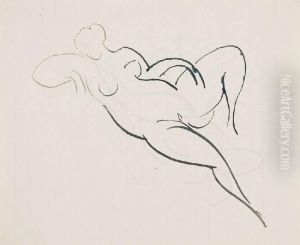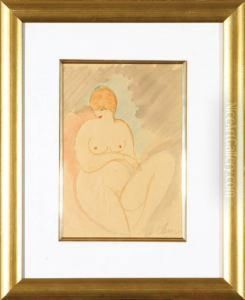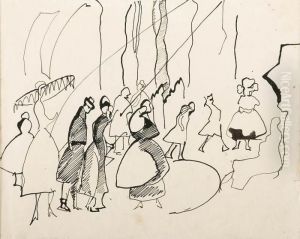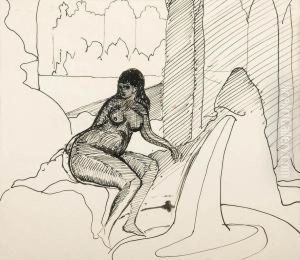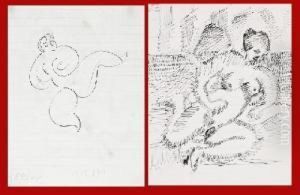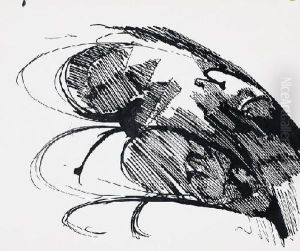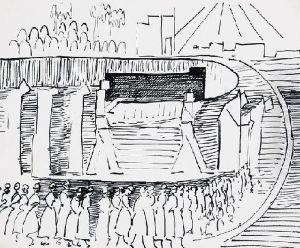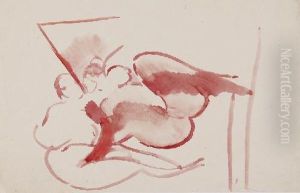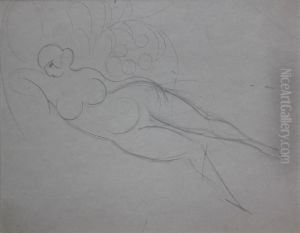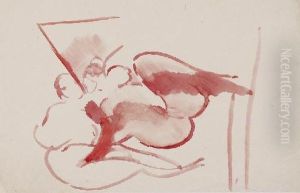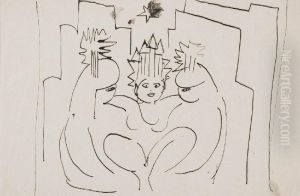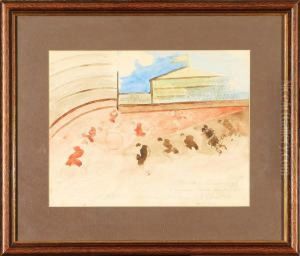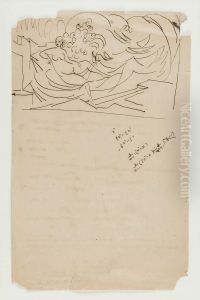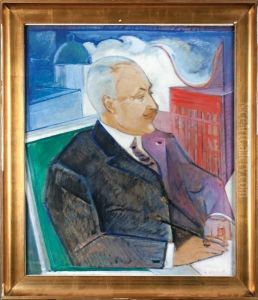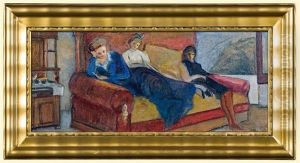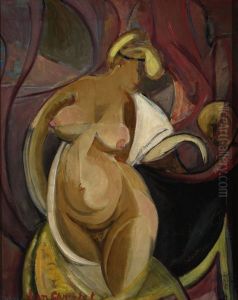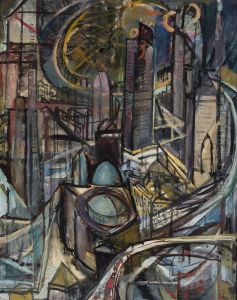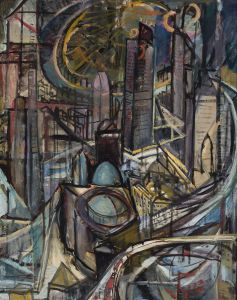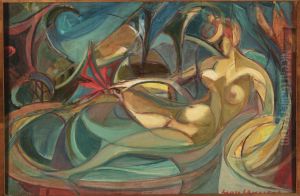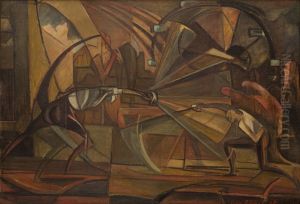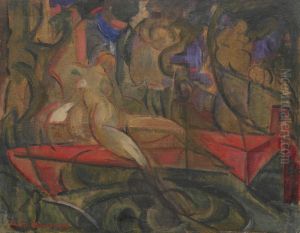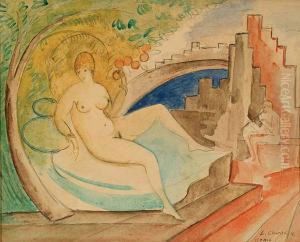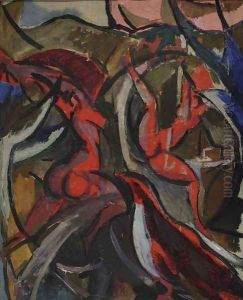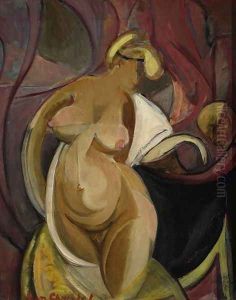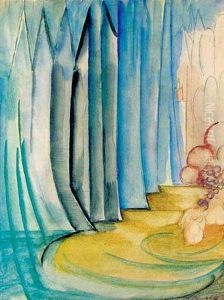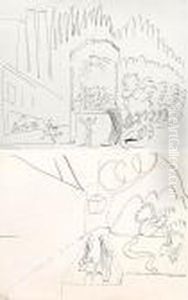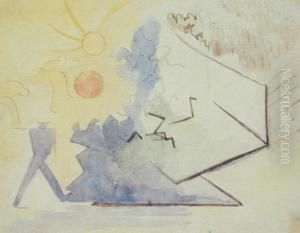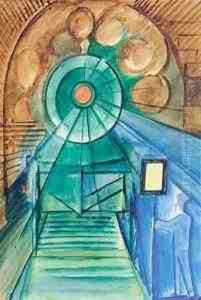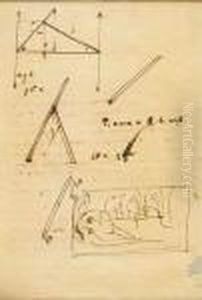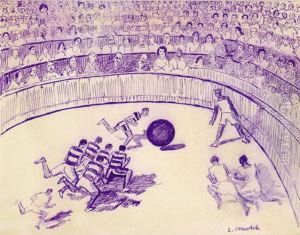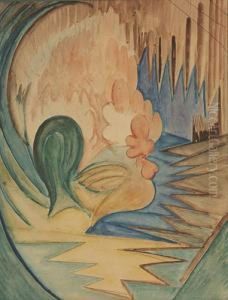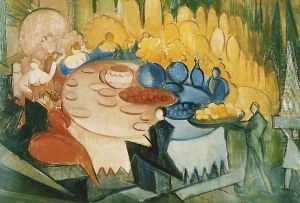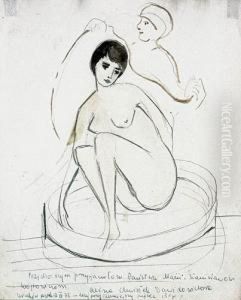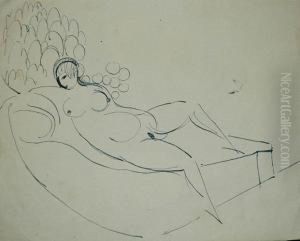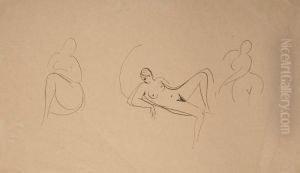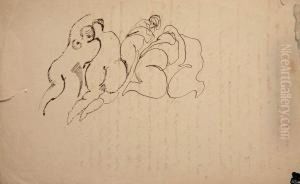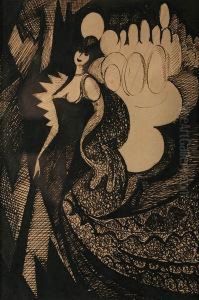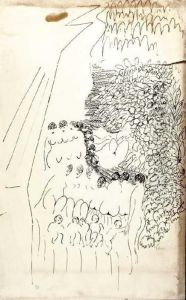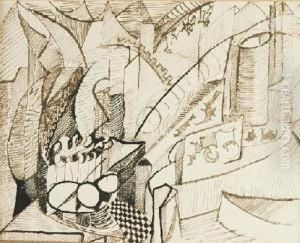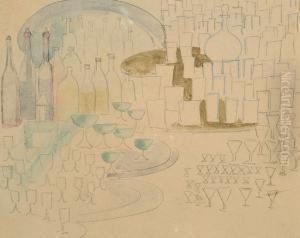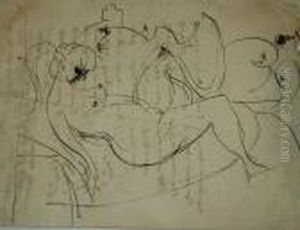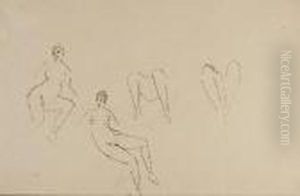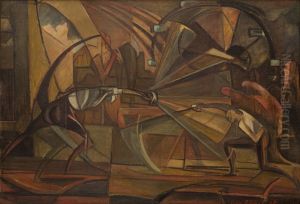Leon Chwistek Paintings
Leon Chwistek was a Polish avant-garde artist, theoretician, and philosopher, as well as a mathematician and logician. Born on June 13, 1884, in Kraków, then part of the Austro-Hungarian Empire, Chwistek played a significant role in the development of modern art in Poland. He is best known for his contributions to the Formist movement, which sought to create a new form of art that would break from the traditional styles and embrace the modern industrial age with its new visual language.
Chwistek studied mathematics and philosophy at the Jagiellonian University in Kraków and later at the University of Göttingen in Germany. Despite his strong academic background, he was deeply interested in art and became involved in artistic circles. During World War I, Chwistek served in the Austro-Hungarian Army, and his experiences during the war influenced his subsequent work and thoughts about the role of art in society.
After the war, Chwistek became one of the leaders of the Formist movement in Poland along with other avant-garde artists such as Tytus Czyżewski and Stanisław Ignacy Witkiewicz (Witkacy). Chwistek's theoretical writings on art, notably 'The Limits of Art,' outlined his vision for a modern artistic expression that would reflect the complexity and multifaceted nature of reality. He introduced the concept of 'multiple realities,' suggesting that art could represent various layers and dimensions of experience.
Chwistek's artistic output was diverse, including painting, drawing, and stage design. His work often featured bold colors, geometric shapes, and fragmented forms, reflecting the influence of Cubism and Futurism. He also ventured into other artistic movements and styles, such as Constructivism and Surrealism, showcasing his versatility and willingness to experiment.
Throughout the 1920s and 1930s, Chwistek continued to teach and publish on both art and mathematics. He held academic positions and lectured on the philosophy of mathematics, contributing to the field with his work on the foundations of mathematics and logic.
With the outbreak of World War II, Chwistek's situation became increasingly difficult. The invasion of Poland by Nazi Germany in 1939 led to the suppression of avant-garde art and the persecution of intellectuals. Chwistek fled to Lviv, which was then under Soviet control, and continued to work despite the hardships of the war.
Leon Chwistek died on August 20, 1944, in Barvikha near Moscow, Russia, where he had been evacuated due to his deteriorating health. Although his life was cut short by the war, his legacy lives on in the history of modern Polish art and in the field of mathematical logic. His work continues to be studied and appreciated for its innovative approach to art and its philosophical underpinnings that challenged existing norms and encouraged a broader understanding of reality through multiple perspectives.
